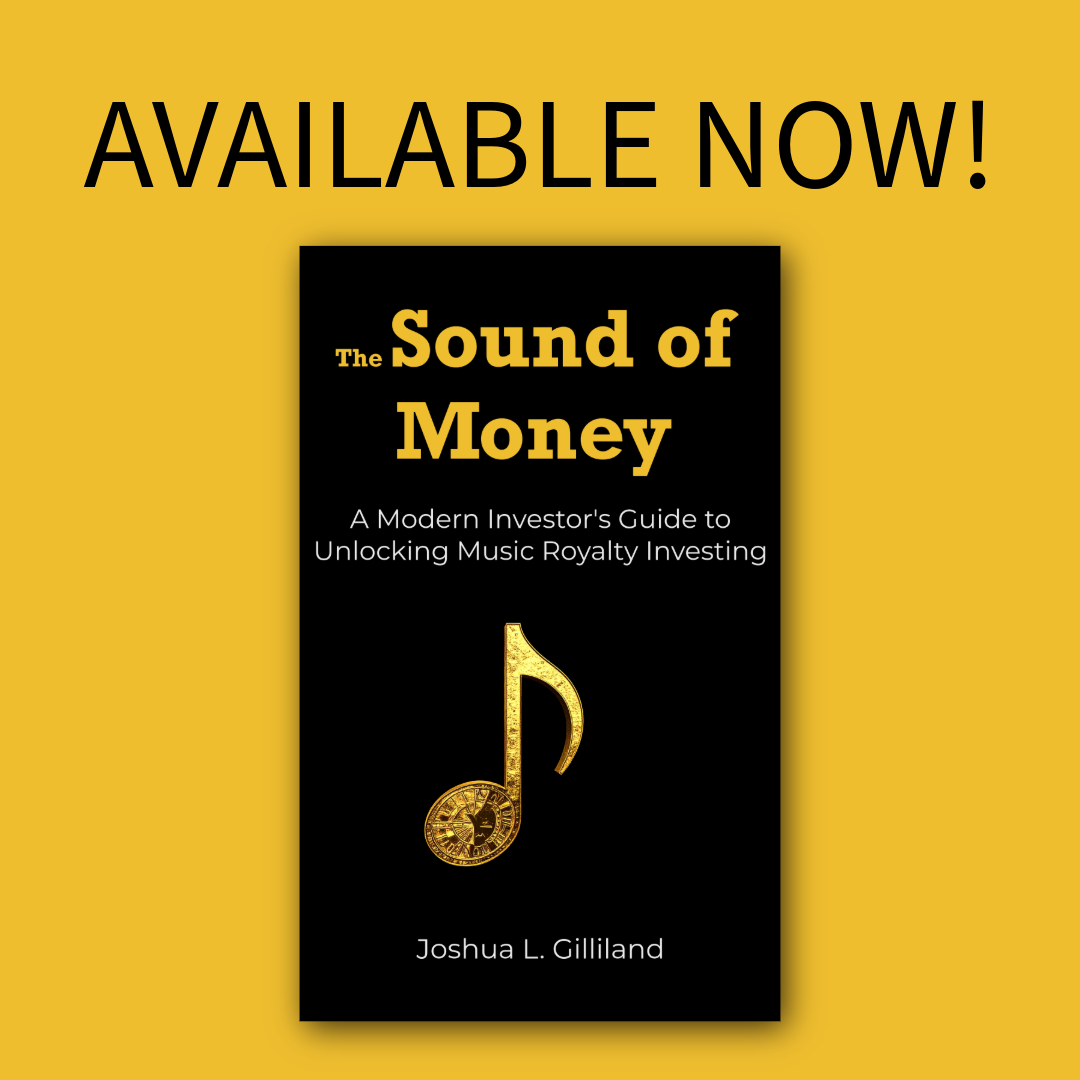The Hidden Advantage: Understanding the Tax Benefits of Music Royalty Investing
Disclaimer: This article is for educational and informational purposes only and should not be considered financial, investment, legal, or tax advice. Before making any financial decisions, you must consult with a qualified and licensed professional, such as a CPA, who can assess your individual situation.
As a music royalty investor, your gross income is only half the story. The real measure of success is your net return—the profit you keep after taxes. While many investors focus solely on purchase multiples and decay rates, they often overlook one of the most powerful financial tools available in this asset class: amortization.
Understanding this concept can transform a good investment into a great one. This is a key part of the advanced strategies I cover in my book, The Sound of Money.
What is Amortization?
Think of it like depreciation for an intangible asset. When you buy a music catalog, the IRS allows you to gradually deduct the purchase price of that asset against the income it generates, typically over a 15-year period.
This creates a significant "paper expense" that can dramatically reduce your taxable income without affecting your actual cash flow.
Amortization in Action: A Simple Example
Let's see how this works in practice:
Initial Investment: You purchase a royalty catalog for $15,000.
Annual Amortization Deduction: Using the standard 15-year schedule, your annual deduction is $1,000 ($15,000 / 15 years).
Year 1 Income: Your catalog generates $1,500 in cash royalties.
Calculating Your Taxable Income: Your taxable income is not the full $1,500 you received. It's your income minus your amortization deduction.
$1,500 (Royalty Income) - $1,000 (Amortization) = $500 (Taxable Income)
In this scenario, thanks to amortization, you only pay income tax on $500, even though you pocketed the full $1,500 in cash. That’s $1,000 in cash that the tax man can’t touch this year—money you can reinvest or use as you see fit. This "tax shield" is a powerful advantage that can significantly boost your net returns over the life of the investment.
This is a foundational concept, but it's just the beginning. The strategy becomes even more powerful when you explore its impact on the sale of an asset or how these investments can be held within tax-advantaged structures, like a Self-Directed IRA.
This "tax shield" is just one of many strategies savvy investors use. If you're ready to master the advanced tax and legal frameworks that maximize your returns, The Sound of Money: A Modern Investor's Guide to Unlocking Music Royalty Investing provides the complete playbook.
Order your copy on Amazon today and learn how to keep more of what you earn.

